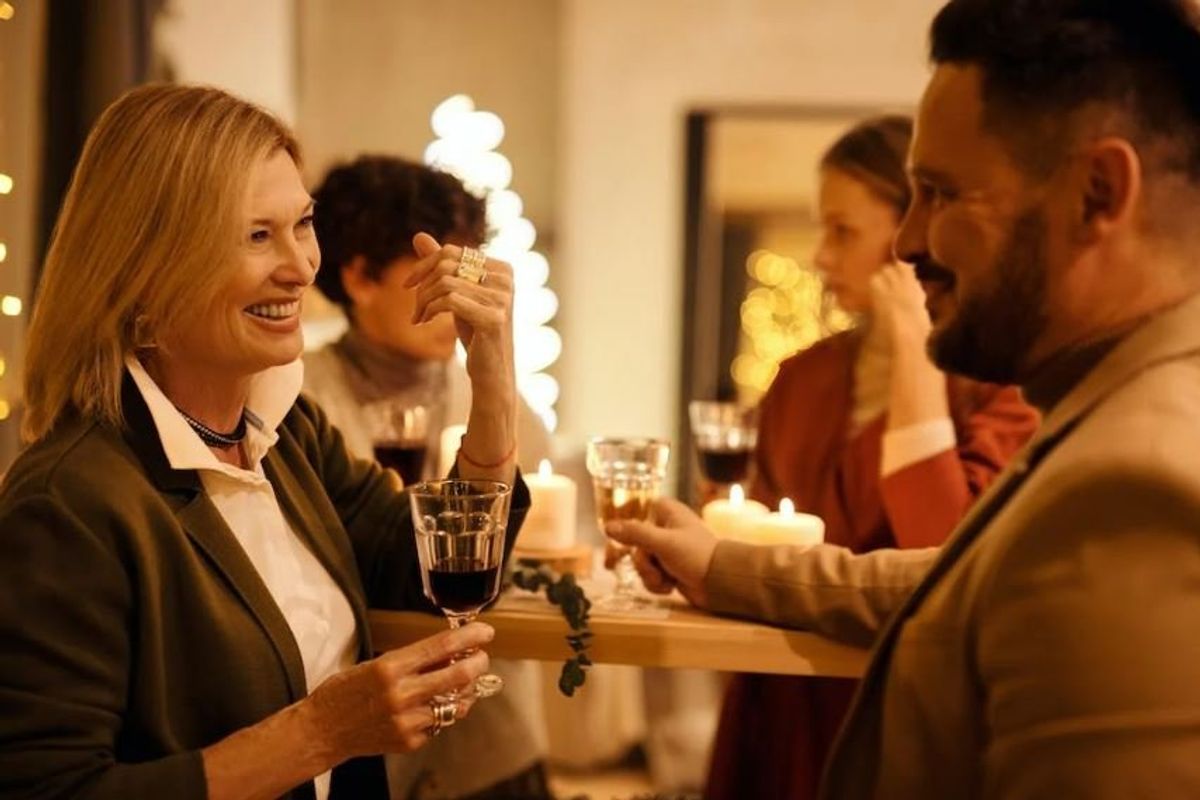Want to be an excellent conversationalist? You should know the 43:57 rule.
It works for dating, friendships and business.

A couple havng a fun coversation on a date
When we think about gifted conversationalists, we’re more likely to think of great talkers—those who wow us with their insights, wit, and charm. However, communication experts believe that if you want to make a great impression on someone, knowing how to listen goes a long way.
Those of us who love being verbose may think the world loves us because of how well we can talk. But the person sitting in front of you has a lot to say, and nothing makes them feel better during a conversation than your undivided attention.
As the old saying goes, we never quite remember everything someone has said to us, but we’ll never forget how they made us feel. When you actively listen to your conversation partner, they feel that you value them and are receptive to their needs. It also eases any feelings of conflict or resentment.
After a good conversation, the person you spoke with should think, “Wow, that person really gets me,” instead of, “It was like I didn’t even exist.”
A study from 2016 on sales calls did an excellent job of quantifying the amount we should speak versus listen during a conversation. A marketing director at Gong.io analyzed 25,537 sales calls using artificial intelligence and found that the interactions where the salesperson talked 43% of the time and listened 57% of the time had the highest sales yield.
This finding has come to be known as the 43:57 rule.
Even though the study was conducted on business calls, the reason that it works should apply to social conversations as well. Paying more attention helps a salesperson identify the client's needs and makes them feel comfortable spending money because they know it's with someone who understands their interests.
It’s the same as a social situation where the person you speak to wants to know they are valued and you respect what they say.
This is excellent advice, but sometimes it’s hard to listen when you’re in a fun conversation and have a lot to say. Kate Murphy, author of "You’re Not Listening," says it’s all about staying calm.
"Deep breaths are always good. They're always good. Because it...calms down that fear response. It helps you get more centered,” Murphy told WBUR. “But also to develop your curiosity. Like I said, make it more important to be curious than to be right. And to go into every conversation with that mindset of how could I be wrong? Instead of, let me prove how I'm right.”
“That's how you develop creative ideas. It's how you cooperate. It's how you find middle ground, or at least a peaceable existence,” Murphy added.
The idea that to be a great conversationalist one should master the art of listening is a bit counterintuitive. But, if you feel that you have a lot to say in conversations and can be interesting to listen to, imagine how great that’ll make others feel when you show that you enjoy listening to them as well. It’s a virtuous cycle where everyone wins.
This article originally appeared on 3.7.23
- Want to be an excellent conversationalist? You should know the 43:57 rule. ›
- Jeff Bezos explains why he always speaks last in meetings. It's great advice for everyone. ›
- The author behind 'Mean Girls' studied boys too. We should listen to what she has to say. ›
- The weird finger trick that improves your listening skills - Upworthy ›

